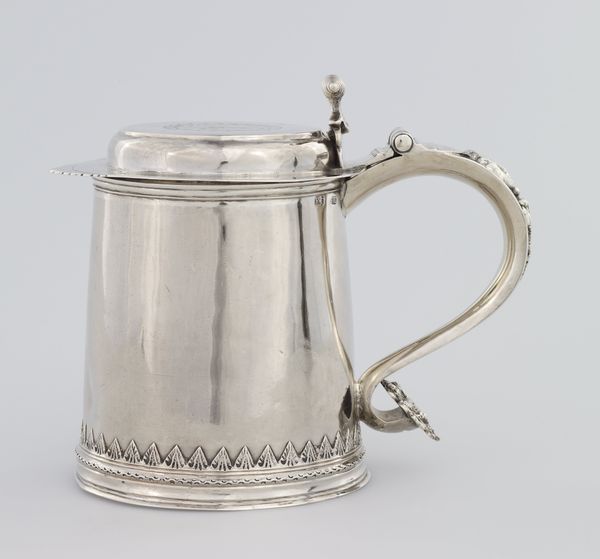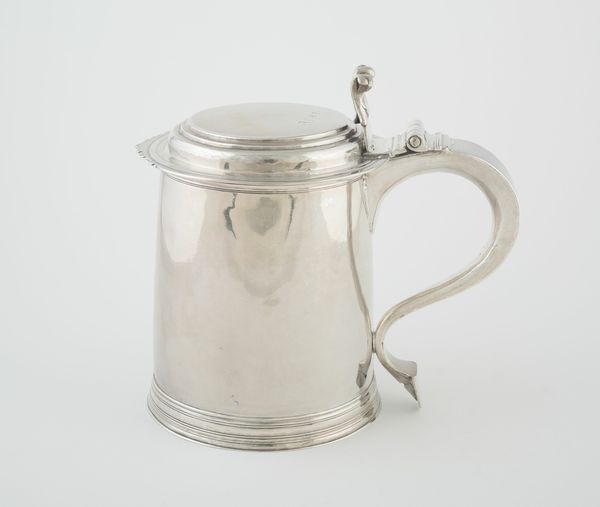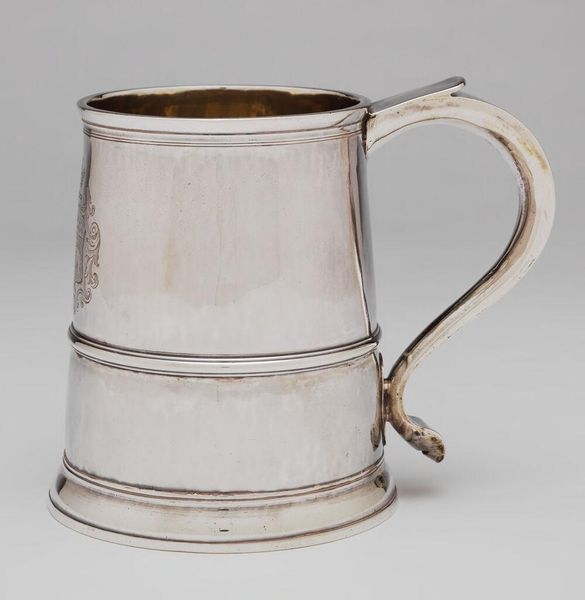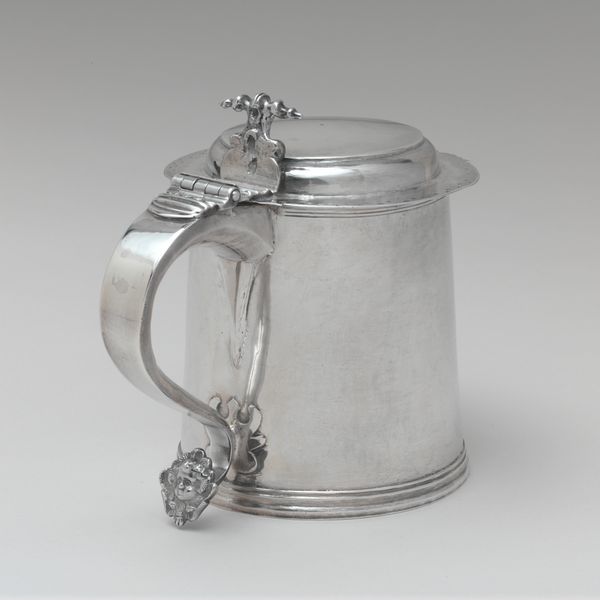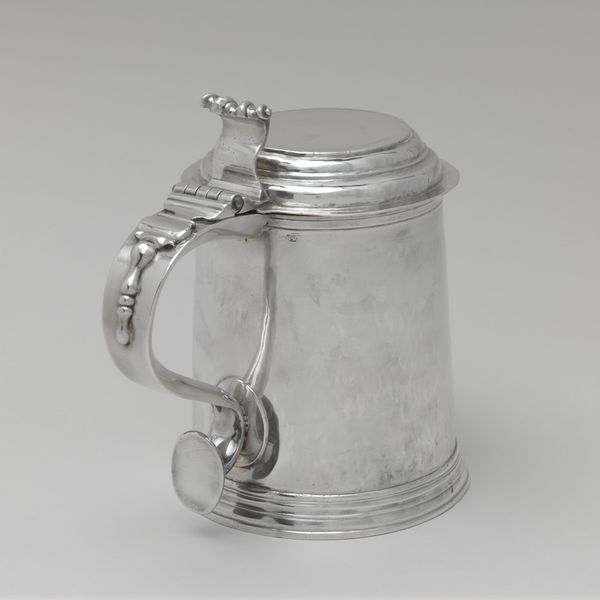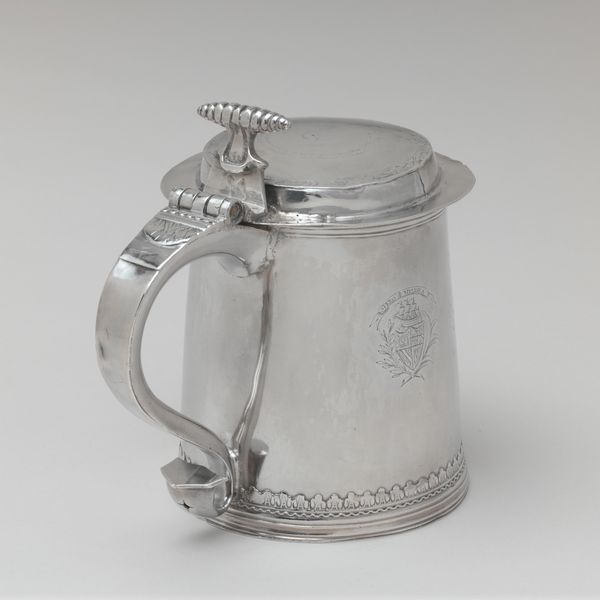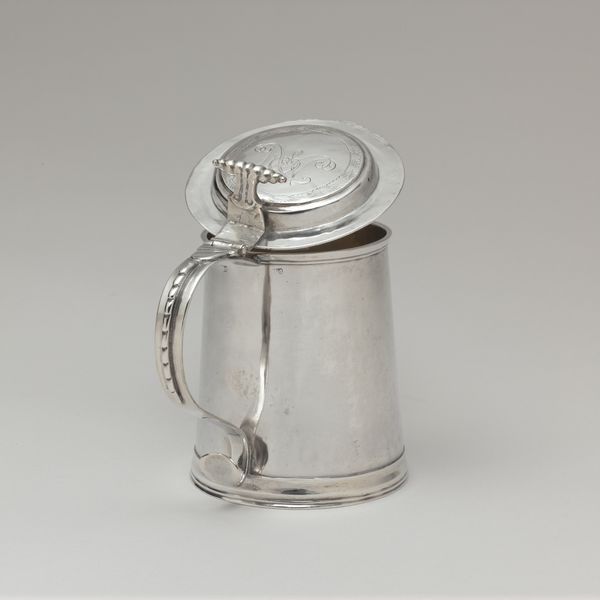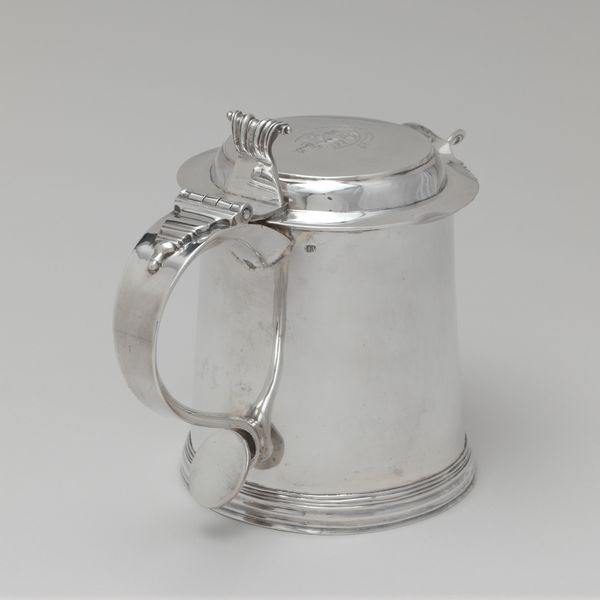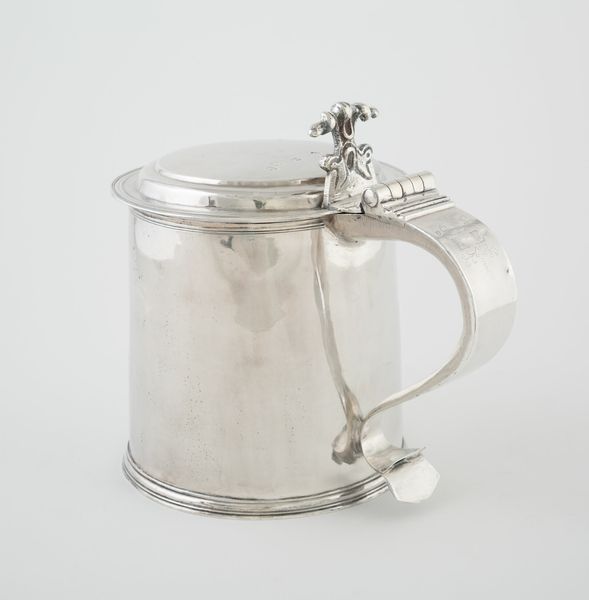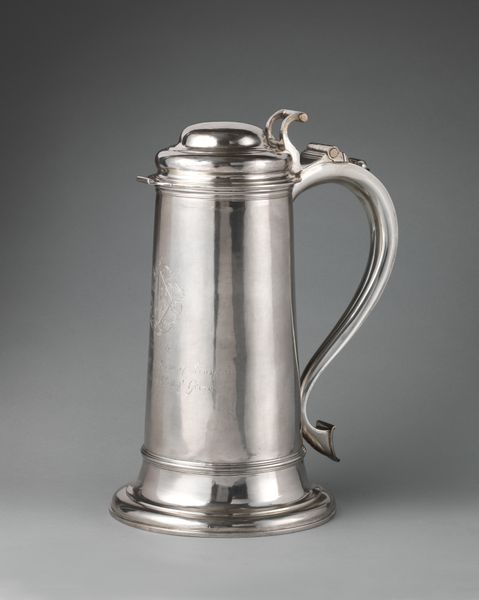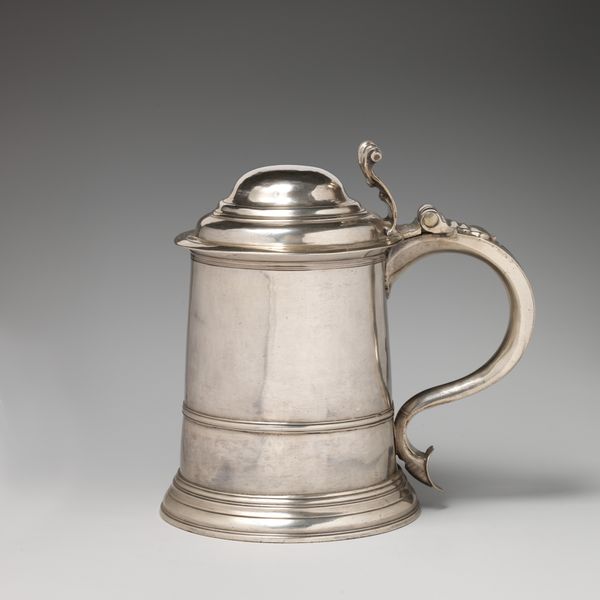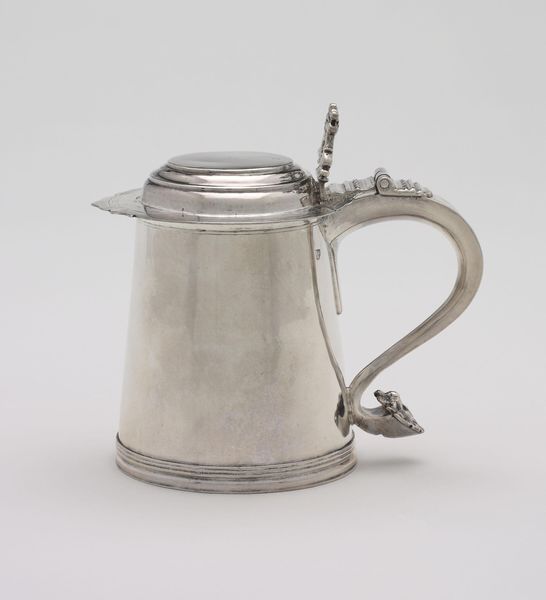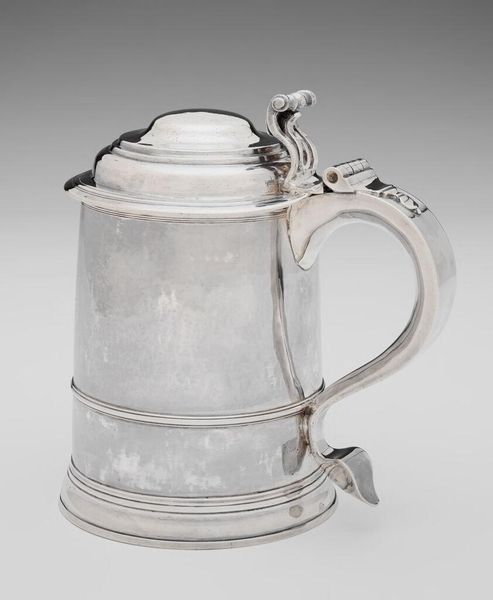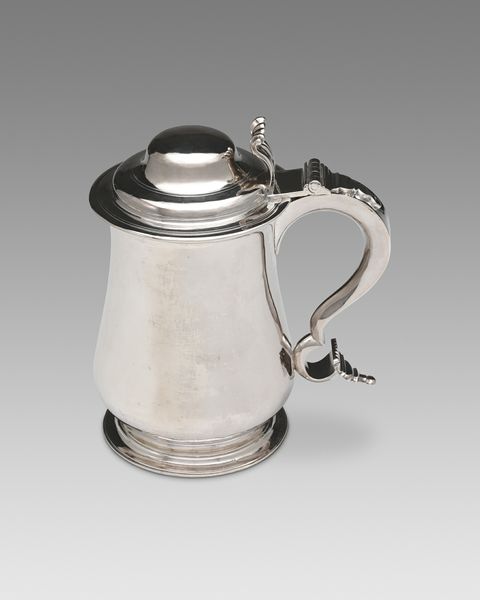
silver, metal
#
silver
#
metal
#
rococo
Dimensions: 8 x 7 3/4 x 5 1/2 in. (20.32 x 19.69 x 13.97 cm)
Copyright: Public Domain
Editor: So, this Tankard, dating from around 1760 to 1770, is currently held at the Minneapolis Institute of Art, crafted from silver. It’s surprisingly austere, but that handle gives it a certain flair. How do you read this piece? Curator: This isn't just a container; it's a statement of social standing, wouldn't you agree? The gleam of the silver, the Rococo flourishes on the handle... these weren't about mere utility. Consider what a shared drinking vessel meant then – community, celebration, oaths sealed over ale. This tankard echoes earlier, simpler forms, but it announces itself as part of the burgeoning material culture of the 18th century. What stories might it whisper about social rituals and the performance of status? Editor: I hadn't thought about the 'performance' aspect, the statement it makes. The choice of silver, obviously expensive, now feels deliberate in creating an impression. Curator: Precisely! It links back to earlier silver traditions and proclaims the owner's adherence to a certain aesthetic. That simple fluted design carries centuries of visual encoding of value and sophistication. How does that link to the modern drinking culture, do you think? Editor: Today, mass-produced items lack the personalized touch. This tankard feels individual, holding stories. I guess objects become imbued with the symbolic weight of time, becoming historical symbols in their own right. Curator: Indeed, cultural memory resides even in the simplest of objects. Recognizing those echoes deepens our appreciation of both past and present. It's like the object gains power from the human interaction across time. Editor: Absolutely, it's not just a vessel but a conduit between us and those who lived centuries ago. Thanks for that new perspective!
Comments
minneapolisinstituteofart about 2 years ago
⋮
On the underside of the base of this tankard is an inscription that reads, "THE GIFT OF Mr. JOSEPH MARVIN, TO JANE LORD, HIS GRAND DAUGHTER 1790." The tankard subsequently descended through the Noyes family of Old Lyme, Connecticut, and eventually came to Minnesota with Edwin Noyes Dodge in 1865. Mr. Dodge, a farmer, served as a state senator from Dodge County, Minnesota from 1887 to 1889. Based on comparisons to other New York-style tankards, this tankard's flat top and broader proportions resemble pieces by silversmiths Myer Myers and Elias Pelletreau dating to the third quarter of the 18th century. Originally attributed to Gordon Tracy, a Connecticut-based silversmith, the tankard was likely made in New York and later repaired and/or retailed by Tracy, during which time the 1790 inscription may have been added. This reworking is evidenced through a later-styled handle, a number of repair marks, and an apparent overlap between one of Tracy's marks with an unidentified mark on the underside of the piece. The practice of overstriking a previous maker's mark was commonly done when a shop did repair work.
Join the conversation
Join millions of artists and users on Artera today and experience the ultimate creative platform.
